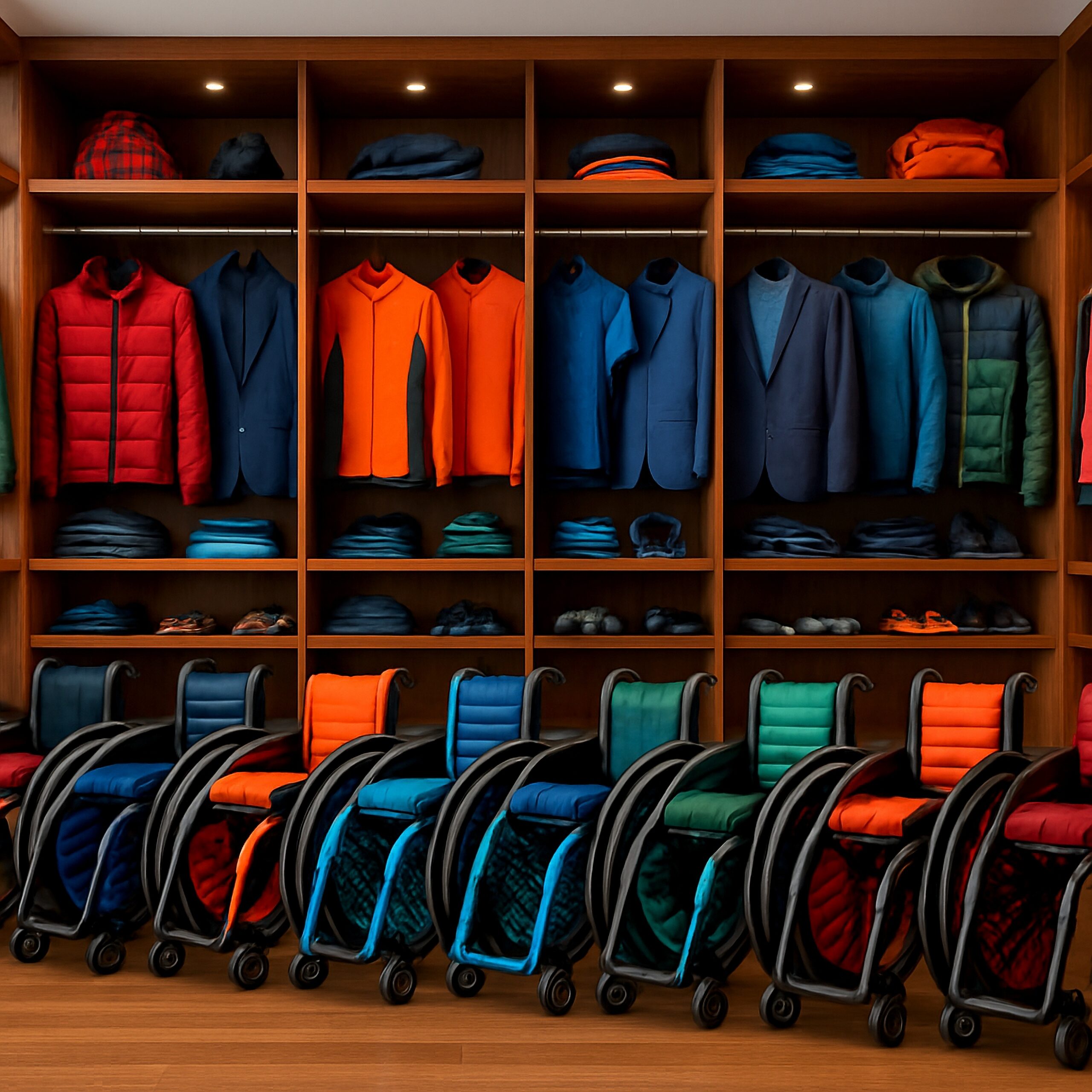Imagine this: your wheelchair is not just a tool for getting around—it’s an extension of who you are. Just like your favorite outfit or the way you style your hair, it’s a statement of your personality. Yet, for many, the reality is far from this ideal. The world of wheelchair design often overlooks the importance of personalization, leaving users to navigate a one-size-fits-all landscape.
For individuals with disabilities, a wheelchair is more than just a means of mobility. It’s a trusted companion that shapes daily experiences and interactions. Whether it’s exploring bustling city streets, enjoying outdoor adventures, or simply spending time with loved ones, a wheelchair plays a crucial role in how one engages with life. As users pursue their passions and navigate various environments, they seek not only functionality but also personalization that reflects their unique style and needs.
The Journey of a Full-Time Wheelchair User
As someone who has spent years navigating the world from a wheelchair, I’ve encountered my fair share of challenges and insights. The jokes about how many chairs I’ve owned are endless—powered chairs, power-assist chairs, sports chairs for rugby and salsa dancing, and a variety of manual chairs. It’s true; my collection might seem amusing, but the reality is that each chair serves a different purpose. Yet, all too often, the chairs prescribed to me don’t align with my lifestyle.
This isn’t just my story. Countless individuals face similar struggles, accumulating chairs not out of desire but out of necessity. As our functional needs evolve, the limitations of the current system become glaringly apparent. Insurance typically covers only one new wheelchair every five years, making the decision of what to choose both critical and long-lasting.
Balancing Medical Needs with Independence
When it comes to prescribing wheelchairs, medical necessity often takes center stage. Physical therapists and specialists focus on creating prescriptions based on clinical requirements, which is undeniably important. However, this approach frequently overlooks the ultimate goal: maximizing user independence.
Independence encompasses a wide range of life activities—driving, shopping, cooking, and social interactions. Unfortunately, many wheelchairs prioritize posture and “perfect positioning” at the expense of independence. This clinical focus can inadvertently hinder a person’s ability to fully engage in life. It’s time for service providers to shift their perspective, embracing a holistic view that supports the diverse needs of individuals with disabilities.
Wheelchairs as a Wardrobe Essential
The conversation around wheelchair design must expand beyond functionality to include aesthetics and personal expression. For many users, a wheelchair is not just a mobility aid; it’s a part of their identity. Yet, the current market often falls short in providing options for personalization comparable to those found in fashion.
Imagine if you could customize your wheelchair as easily as you choose an outfit. Modular designs could allow users to change colors, patterns, or textures, much like selecting accessories to complement a look. Such customization options could empower individuals to express their personal style while ensuring their wheelchair remains functional and comfortable.
Navigating Different Terrains with Ease
Another challenge in wheelchair customization is the inability to easily swap parts for different activities. While all-terrain wheelchairs exist, adapting a chair for specific uses often requires an entirely new frame. Transitioning from hiking to salsa dancing isn’t as simple as changing shoes, and this lack of adaptability can be frustrating.
The industry must recognize this challenge and work toward developing modular systems that allow users to customize their wheelchairs for specific environments easily. This flexibility would enable seamless transitions between different terrains and activities, reducing the need for multiple chairs and the financial burden that comes with them.
The Leasing and Returning Conundrum
The absence of leasing options presents another significant hurdle. Once a wheelchair is purchased, returning or exchanging it is often difficult. While repair services are available, the reality is that if a chair doesn’t suit a user’s lifestyle, they may have no recourse.
A leasing model could offer greater flexibility, allowing users to adapt their mobility devices as their needs change without the commitment of permanent ownership. This approach could alleviate some of the financial pressures associated with wheelchair acquisition, especially given the diverse and evolving needs of users.
Technological Advancements in Customization
The landscape of wheelchair design is evolving rapidly, thanks to technological advancements. Innovations such as smart technology integration and modular designs are opening doors to more personalized and functional wheelchairs. These technologies facilitate rapid prototyping and production, enabling users to receive tailored solutions more quickly than ever before.
Smart wheelchairs equipped with sensors can adapt to the user’s environment, enhancing mobility and safety. As these technologies continue to develop, they hold the potential to revolutionize wheelchair customization and user experience.
Conclusion
The journey toward achieving the best possible wheelchair is not just about meeting medical needs or functional design. It’s about embracing independence, flexibility, and the urgent need for stylish, customizable solutions. As we advocate for the rights and needs of individuals with disabilities, it’s crucial to push for industry reforms that prioritize user independence and personalization.
By recognizing wheelchairs as part of a wardrobe, we can foster a culture that empowers individuals to express themselves and embrace their unique identities. The future of wheelchair customization must be driven by the voices and experiences of those who use these vital mobility devices, ensuring that they are not only functional but also reflective of the diverse and vibrant lives they support.
So, let’s start a conversation. Share your thoughts, your challenges, and your visions for the future of wheelchair customization. Together, we can create a world where mobility and self-expression go hand in hand.





